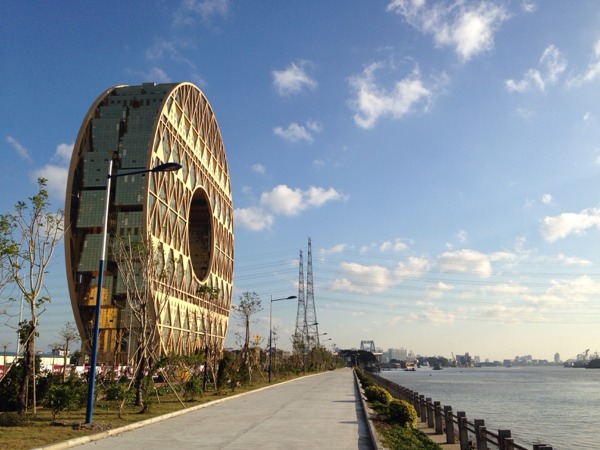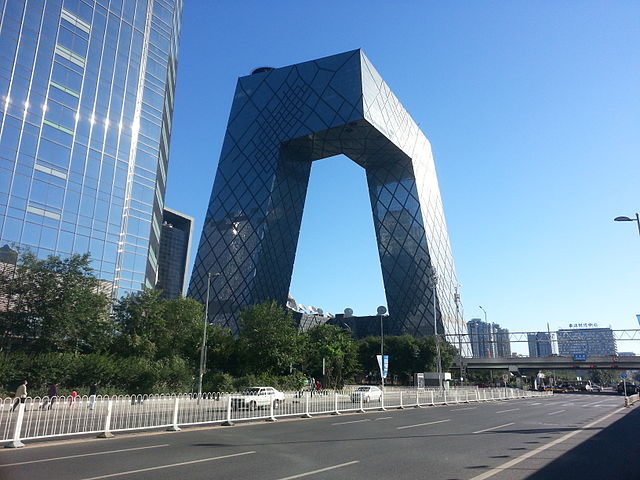During a literary symposium in Beijing last week, Chinese President Xi Jinping read a two-hour speech addressing Chinese architects and artists who have contributed to China’s sizable stock of avant-garde structures.
Architects, along with authors, actors, script writers, and dancers, were urged by the president to not pursue commercial success at the expense of producing work with artistic and moral value, national news agency Xinhua reports. For architects specifically, the president encouraged them not to “engage in weird building.”
In his speech, Jinping said that art should “be like sunshine from the blue sky and the breeze in spring that will inspire minds, warm hearts, cultivate taste, and clean up undesirable work styles.”
He also reminisced how art and literature during his childhood—a period when China was going through the so-called Cultural Revolution—was more respectful to history.
Many news agencies, both Chinese and International, interpreted the president’s speech as a call to more patriotic, socialist, and nationalistic art closer to traditional Chinese aesthetics.
Hong Kong-based news agency Wen Wei Po says it means China won’t have any more da kuzi (“big pants”) in the future, the nickname Chinese Web denizens used for Rem Koolhas’ CCTV building in Beijing.

The Guangzhou Circle. Wikimedia Commons/Amprogetti

The CCTV Building in Beijing has been nicknamed "Big Pants." Wikimedia Commons/Verdgris
Related Stories
| Aug 11, 2010
'Flexible' building designed to physically respond to the environment
The ecoFLEX project, designed by a team from Shepley Bulfinch, has won a prestigious 2009 Unbuilt Architecture Design Award from the Boston Society of Architects. EcoFLEX features heat-sensitive assemblies composed of a series of bi-material strips. The assemblies’ form modulate with the temperature to create varying levels of shading and wind shielding, flexing when heated to block sunlight and contracting when cooled to allow breezes to pass through the screen.
| Aug 11, 2010
New book provides energy efficiency guidance for hotels
Recommendations on achieving 30% energy savings over minimum code requirements are contained in the newly published Advanced Energy Design Guide for Highway Lodging. The energy savings guidance for design of new hotels provides a first step toward achieving a net-zero-energy building.
| Aug 11, 2010
Perkins+Will master plans Vedanta University teaching hospital in India
Working together with the Anil Agarwal Foundation, Perkins+Will developed the master plan for the Medical Precinct of a new teaching hospital in a remote section of Puri, Orissa, India. The hospital is part of an ambitious plan to develop this rural area into a global center of education and healthcare that would be on par with Harvard, Stanford, and Oxford.
| Aug 11, 2010
Burt Hill, HOK top BD+C's ranking of the nation's 100 largest university design firms
A ranking of the Top 100 University Design Firms based on Building Design+Construction's 2009 Giants 300 survey. For more Giants 300 rankings, visit http://www.BDCnetwork.com/Giants
| Aug 11, 2010
PBK, DLR Group among nation's largest K-12 school design firms, according to BD+C's Giants 300 report
A ranking of the Top 75 K-12 School Design Firms based on Building Design+Construction's 2009 Giants 300 survey. For more Giants 300 rankings, visit http://www.BDCnetwork.com/Giants
| Aug 11, 2010
Turner Building Cost Index dips nearly 4% in second quarter 2009
Turner Construction Company announced that the second quarter 2009 Turner Building Cost Index, which measures nonresidential building construction costs in the U.S., has decreased 3.35% from the first quarter 2009 and is 8.92% lower than its peak in the second quarter of 2008. The Turner Building Cost Index number for second quarter 2009 is 837.







